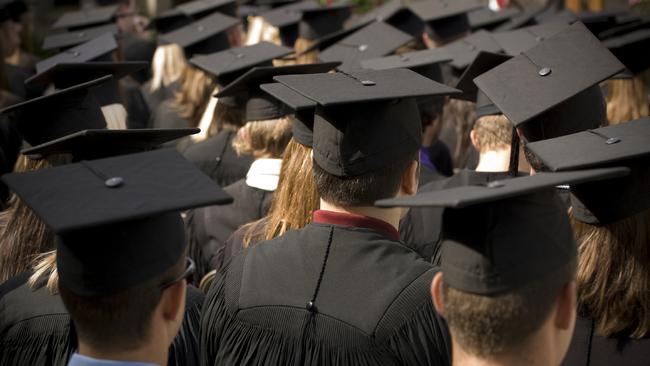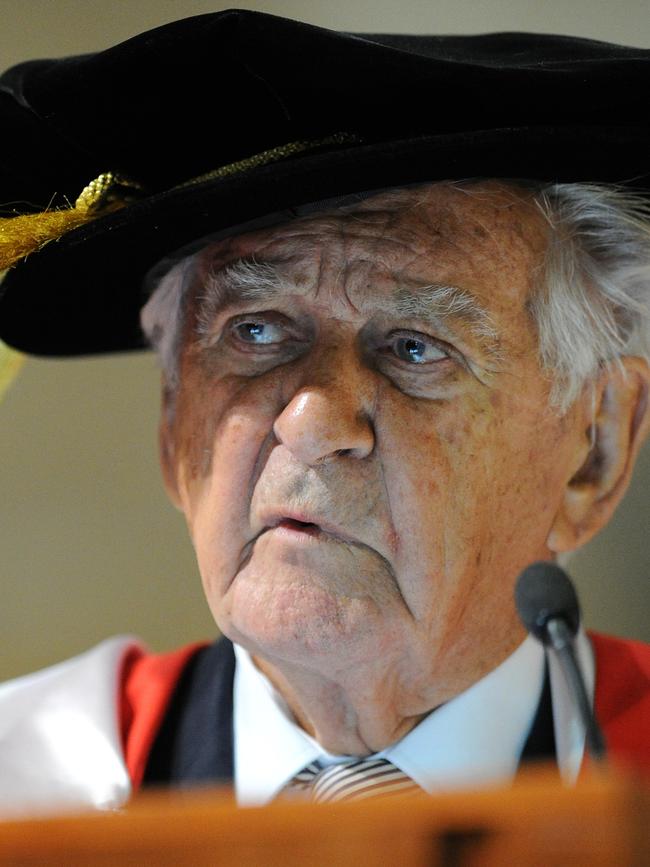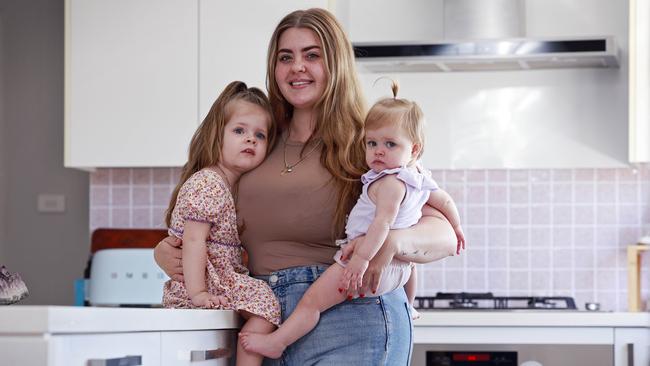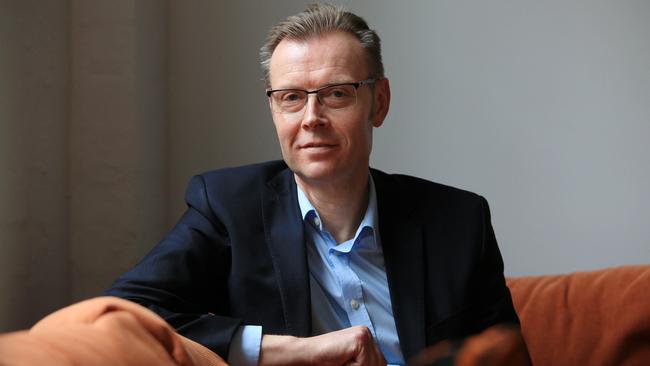Women hardest hit by HECS debts that financially cripple ex-students
Former PM Bob Hawke’s idea of getting university students to contribute to the cost of their study has turned into a complete monster that hits women especially hard.
NSW
Don't miss out on the headlines from NSW. Followed categories will be added to My News.
Australia’s student loan system was designed for a country that no longer exists.
In 1989 — the year HECS began — not only were there no mobile phones or internet, there wouldn’t even be cable television for another five years.
Back then a place at university was hard to come by — in that year only 12 per cent of people had a bachelor degree or higher. Which is unsurprising because at that time “professional” jobs such as nursing and teaching didn’t need degrees.
So when Bob Hawke’s government introduced the Higher Education Contribution Scheme, its underlying assumption that people with degrees earned more than the average person and so ought to make a contribution to the cost of their education was both true and fair.
Which is why when the scheme was established repayments didn’t kick in until the graduate earned $22,000 a year, which, believe it or not, back then was 98.4 per cent of annualised average weekly earnings.
Fast forward to 2023-24 and HELP payments kick in at $51,550, which is only around two-thirds of average weekly earnings.
Back then the most a debtor could be slugged a year was 3 per cent of their income. Today people can be walloped up to 10 per cent.

And while back in 1989 not much more than one in 10 people had degrees, today it’s more like one in three. In 2023 the ABS found 36 per cent of women aged 15-74 had degrees and 28 per cent of men.
More than half of women aged 25-34 (52 per cent) and half aged 35-44 now have degrees.
The difference between the numbers of men and women who go to university means that women are much more likely to have student debt than men. Men are much more likely to do trades, which don’t lumber them with student debt.
Former bureaucrat Mark Warburton, who is attached to Melbourne University has been arguing for several years that the system discriminates against women.
“When HECS was introduced only around 12 per cent of young people went to uni and they nearly all ended up in high-paying job — they were a small, privileged elite and who cared if they ended up with a HECS debt,” he said.
“Today it is very different. After school about half of young women go to uni. Men who don’t just get a job, end up evenly split between uni and the trades or some other vocational training.
“The system is unfair to women because many men in the trades end up on higher incomes than women who go to uni, and people who do a trade are not required to contribute much to their training.”

The different patterns of men’s and women’s working lives has compounded the unfairness. Women are far more likely to take time out from the workforce than men, meaning they are likely to take much longer to repay their student debt.
“Women (are much more likely to) have debts that they can’t repay until well into their 30s,” Warburton said. “Many women end up on modest incomes or working part-time because they are caring for kids or aged relatives.”
Emily Parker, from McGraths Hill in Sydney’s northwest, is one of the people who has seen her debts rise.
The 23-year-old is grappling with a $28,000 HECS debt from her nursing degree at Western Sydney University, a figure which could rise with the nation’s swelling inflation.
Parker spent nine months on maternity leave after the birth of her eldest daughter, Aria, in 2021, which took place while she was taking part in a new graduate nursing program.
Just eight months after returning to the workforce from that leave, her second daughter, Aura, was born.
She took a year-long leave — six months of which were unpaid — before recently returning to finish her new graduate program and work a part-time nursing job.
“I don’t know when it’s ever going to get paid,” she said of her debt.
“You’re 17 and you go to further your education and it’s like, would you give a 17-year-old a $30,000 loan? Probably not. And the government’s like: ‘Yes, we would’,” Parker said.

In some ways the most surprising thing about Australia’s growing student burden — $78 billion and rising last year – is that it has taken so long to become a political issue.
But even though the total amount owed has been rising — as well as the size of the debts individuals were racking up — it’s taken until now to force its way onto the agenda in Canberra. The reason for that can be summed up in one word: Inflation.
Student debt repayment rates are linked to rises in the cost of living and for most of this century inflation was low. But with the end of the pandemic, that world vanished.
This year the value of student debt is expected to rise by around 5 per cent after rising 7.1 per cent last year.
There are slightly less than 3 million people with student debts, of whom 1.1 million made a repayment last year.
According to Teal MP Monique Ryan, for more than a million of these people, despite making repayments, the amount they owe still increased.
A week ago she launched a petition calling for a change to the way these debts are calculated, which has already gathered 185,000 signatures.

It isn’t just the increase in the size of the debts which is pushing the issue up the agenda, it’s the way student debt is impacting on people’s ability to get a home loan.
When the parents of today’s student debtors were buying their first home most financial institutions didn’t bother looking at HECS debts.
But in 2022 the banking regulator APRA demanded lending institutions include student debts when calculating how much they could lend someone.
Andrew Norton, a professor in higher education policy at ANU says APRA made an error.
“APRA lumped in HELP debt with credit card debt when these are fundamentally different types of lending,” he said.
Another complaint is the way the ATO treats small increases in incomes. Unlike income tax rate increases, which only apply to dollars earned above a certain threshold, HELP debt repayment rates are calculated on every dollar earned.
So if a debtor earns more than $1 above a threshold, instead of paying a higher rate on any income earned above that rate, their repayments are calculated across their whole taxable income. This can have the perverse effect where earning an extra dollar can mean paying $1.09 to the taxman.

The government’s recently released report into the future of higher education has argued student debt repayment should in the future be calculated the same way income tax rates are. It has also recommended the reversal of the 2022 APRA ruling.
Norton thinks this should be replaced with a flat rate of 13 per cent extra on every dollar earned about $51,550
“Obviously this would create a higher tax rate for debtors compared to non-debtors but would really help people who are at the bottom end of repayment bands,” he said.
Education Minister Jason Clare said the government was currently considering reforms “to make the HECS system simpler and fairer for Aussies”.
“This includes changes to how indexation is applied,” he said.
“More and more jobs require a uni degree or a TAFE qualification, and that means we need more Australians to get a crack at going to uni and TAFE.
“That’s what these reforms we are considering are all about.”
Got a news tip? Email james.campbell@news.com.au



